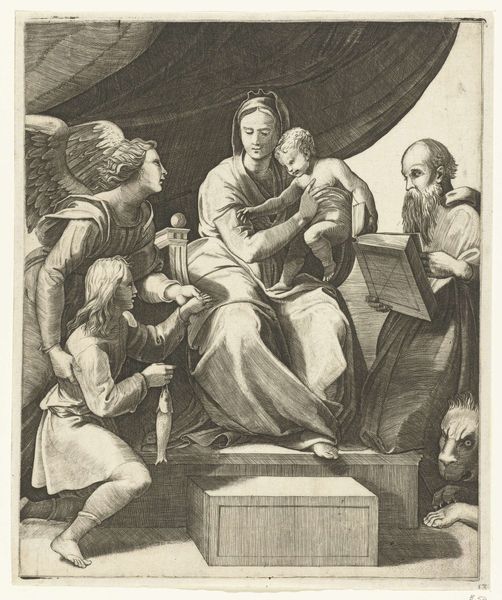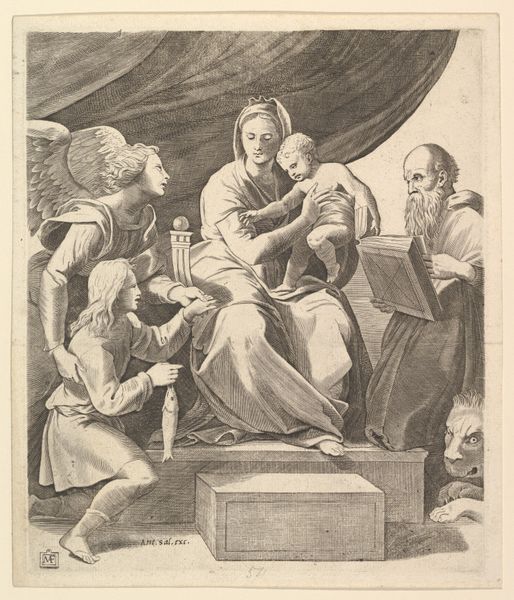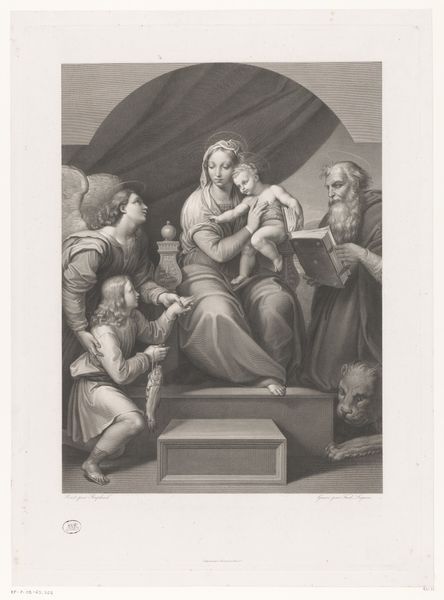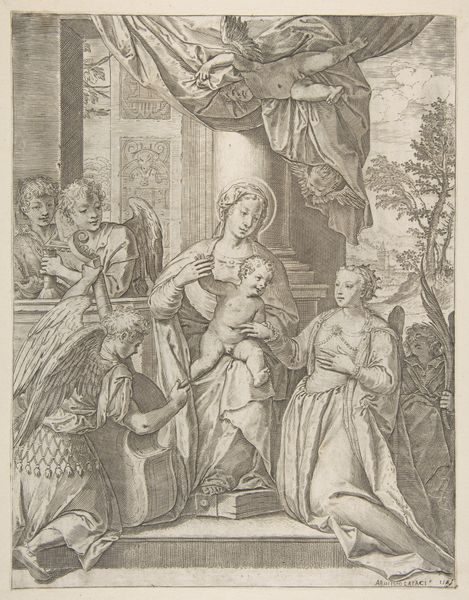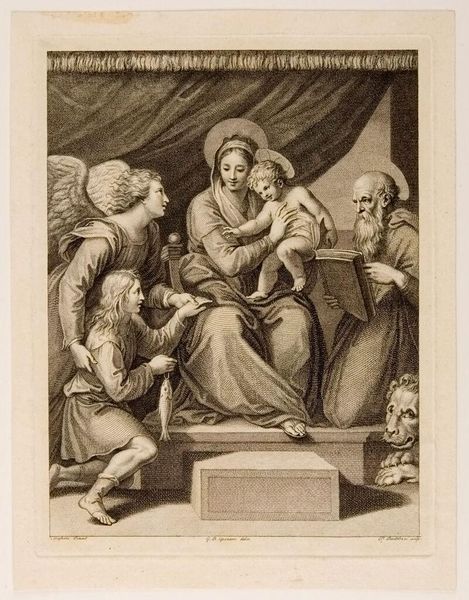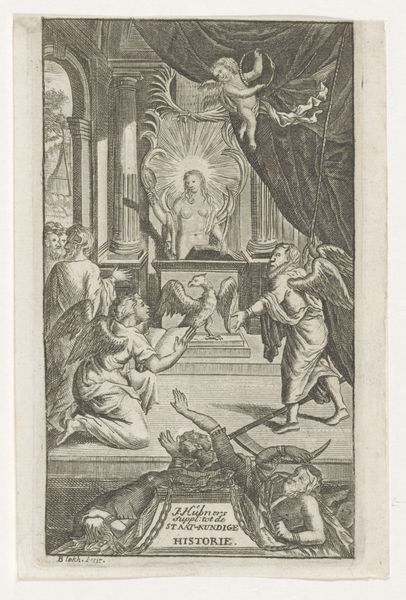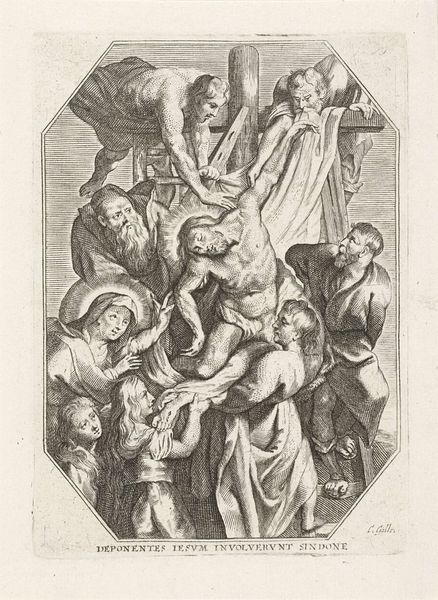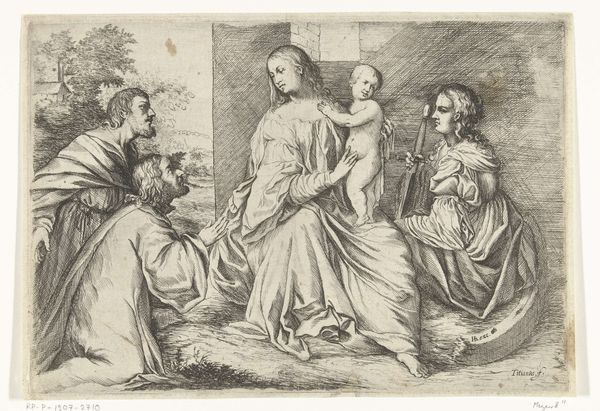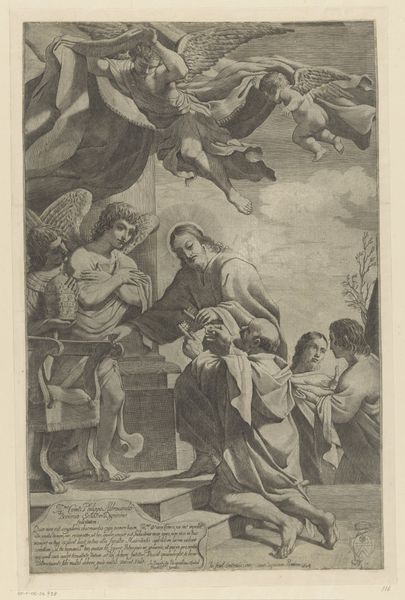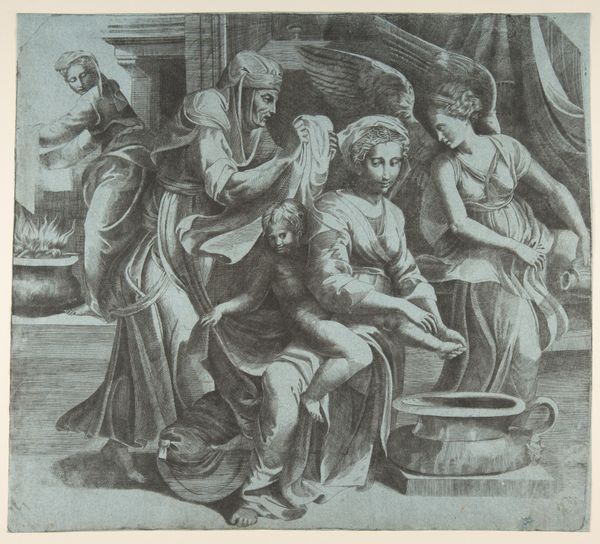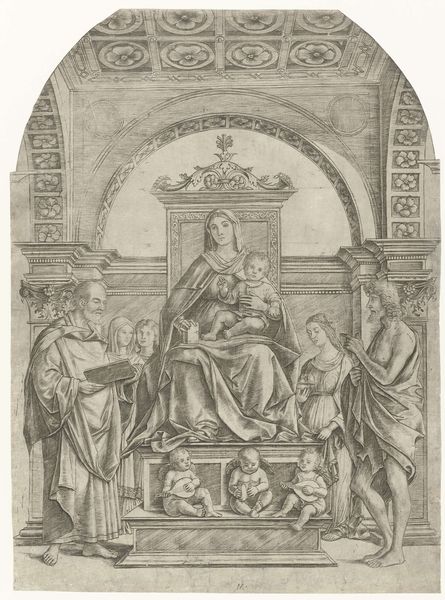
Maria met kind geflankeerd door aartsengel Michaël met Tobias met vis en heilige Hieronymus Possibly 1515 - 1562
0:00
0:00
marcodente
Rijksmuseum
print, engraving
#
allegory
# print
#
figuration
#
history-painting
#
italian-renaissance
#
engraving
Dimensions: height 262 mm, width 216 mm
Copyright: Rijks Museum: Open Domain
Editor: This engraving, “Maria met kind geflankeerd door aartsengel Michaël met Tobias met vis en heilige Hieronymus,” tentatively dated between 1515 and 1562, and currently held at the Rijksmuseum, strikes me as incredibly formal, almost staged. It has this air of studied reverence. How does this image resonate with the period and its broader context? Curator: That feeling of formality is something many prints of the Italian Renaissance share. Think about how these images circulated. Engravings like this, produced by someone like Marco Dente, weren't just about art for art's sake. They served a vital purpose. They disseminated imagery, specifically religious and classical themes, to a wider audience. Editor: So, like visual pamphlets almost? Curator: In a sense, yes. The Church and wealthy patrons used prints to project power and piety. Consider Hieronymus here, deeply engaged in study – he represents theological authority. Michael and Tobias signify divine intervention and healing. But there's also the influence of antiquity isn't it? Editor: Because these classical themes helped create status for those distributing it? How does it affect our view of the art itself, knowing that? Curator: Exactly! It prompts us to examine the institutional forces at play. How did the socio-political landscape shape artistic production and reception? It shifts our focus from solely aesthetic considerations to understanding the cultural work these images performed. Knowing their dissemination gave power helps me see the artwork in a new light. Editor: I see what you mean. Thank you. I guess it isn't just a pretty picture. It's about power dynamics too.
Comments
No comments
Be the first to comment and join the conversation on the ultimate creative platform.
